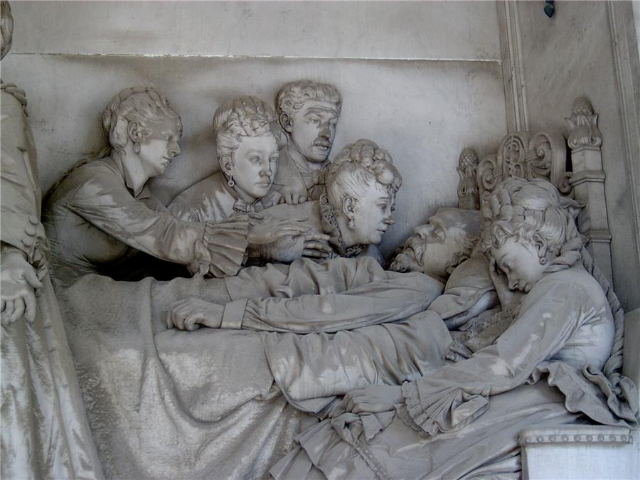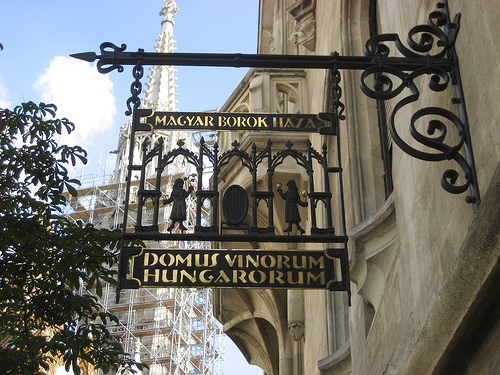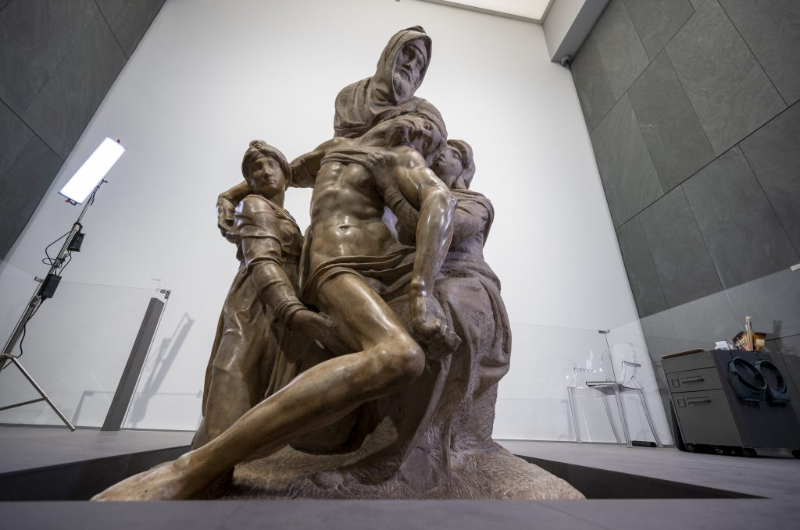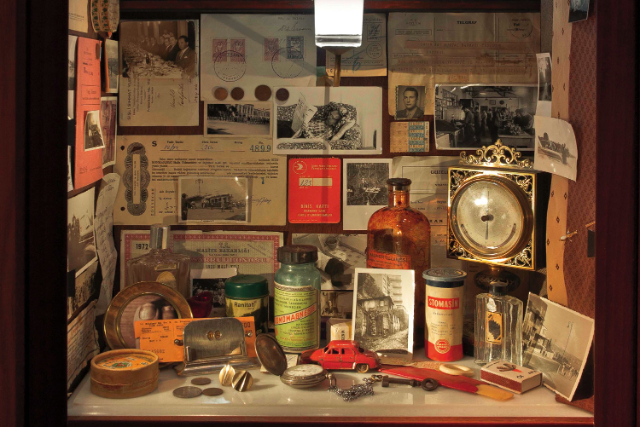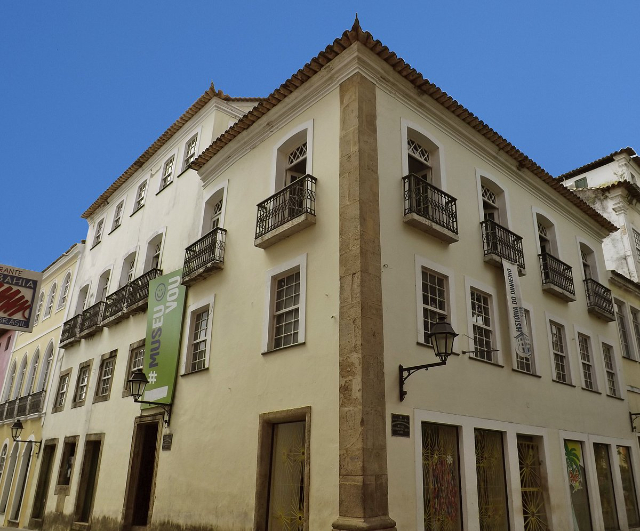In Sector D of the monumental Staglieno Cemetery in Genoa is the tomb of Carlo Raggio, made by sculptor Augusto Rivalta in 1872. Born in Alessandria in 1837, Rivalta moved to Florence after completing his studies at the Accademia Ligustica di belle arti in 1859, where he worked in Dupré’s studio. Rivalta was one of the first artists to adhere to the style of "bourgeois realism," which is characterized by a descriptive and precise approach to representing reality.Carlo Raggio’s Funeral Monument is an emblematic example of the bourgeois realist style, which proved particularly suited to express the new conception of death that took hold in the second half of the 19th century. In this style, the representation of death is stripped of any symbolic or spiritual element, and focuses solely on the expression of the grief and loss that the passing of a loved one represents for his or her relatives.Carlo Raggio’s tomb is characterized by great attention to detail, both in the depiction of the characters and in the choice of clothing and objects surrounding them. The scene depicts the bed of the deceased, surrounded by grieving family and friends. There are no angelic or symbolic figures to alleviate the suffering of those present, nor is there any hope of redemption for those who are no more.In this way, Carlo Raggio’s funeral monument depicts a tragic moment in the life of a family, expressed with a precision and realism that enhance the drama of the scene. Raggio’s tomb is thus not only a work of art of great historical and artistic value, but also a valuable document of the mentality and values of 19th-century society.
